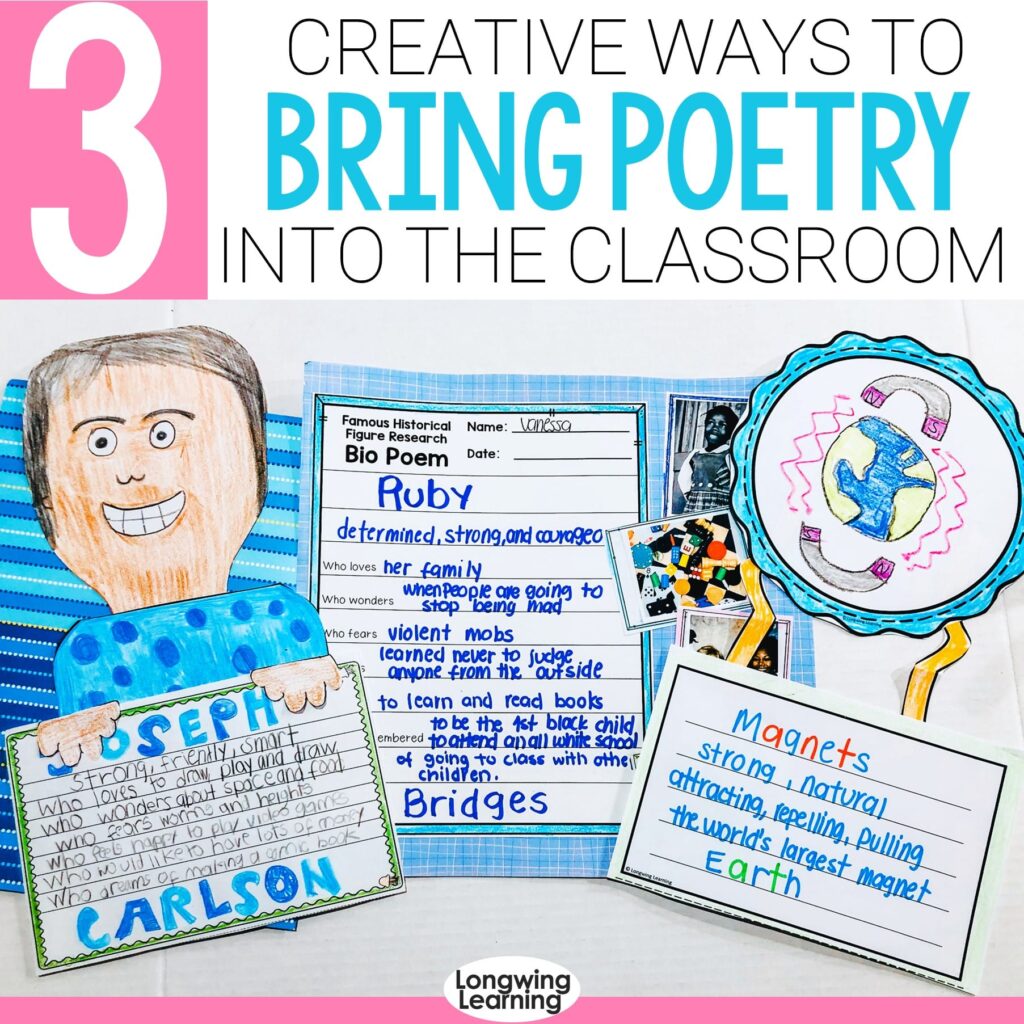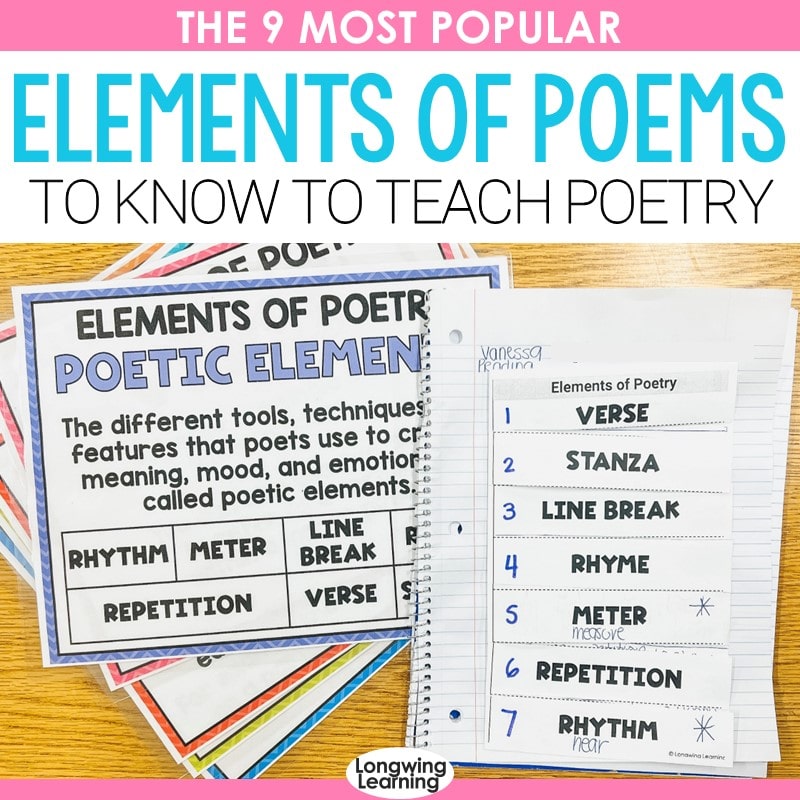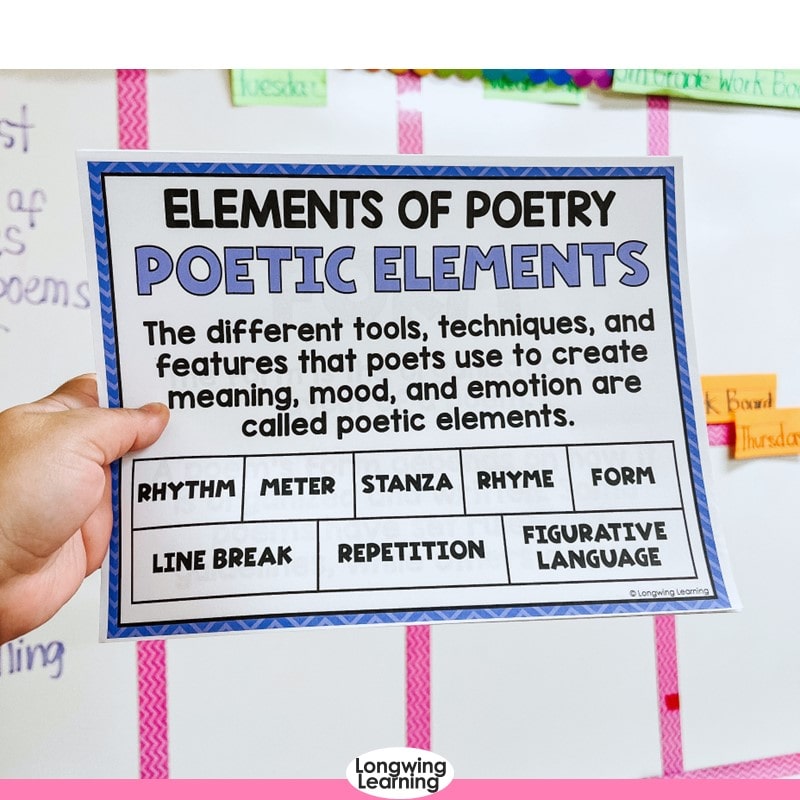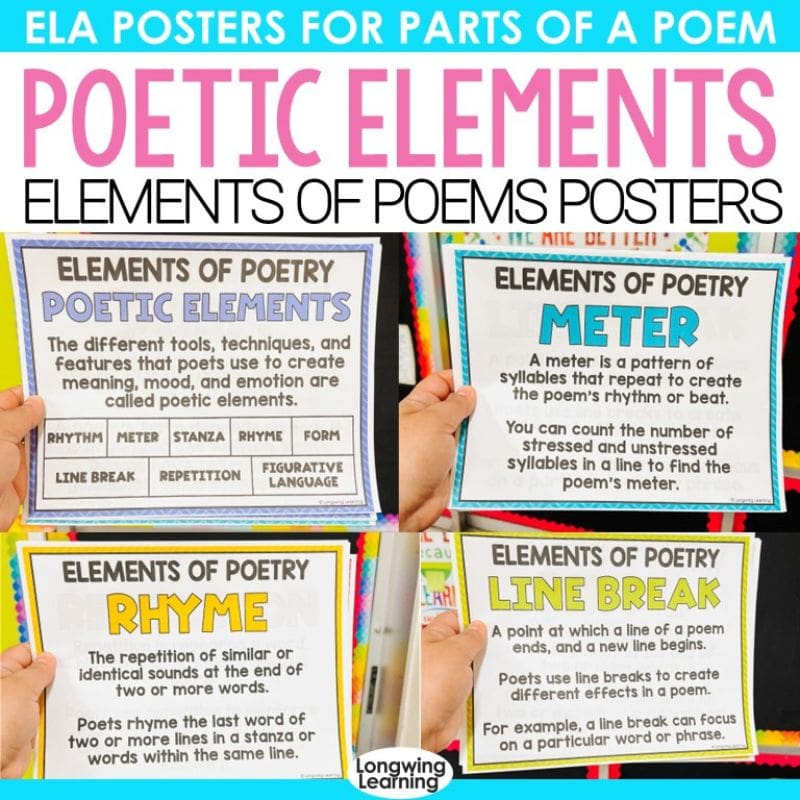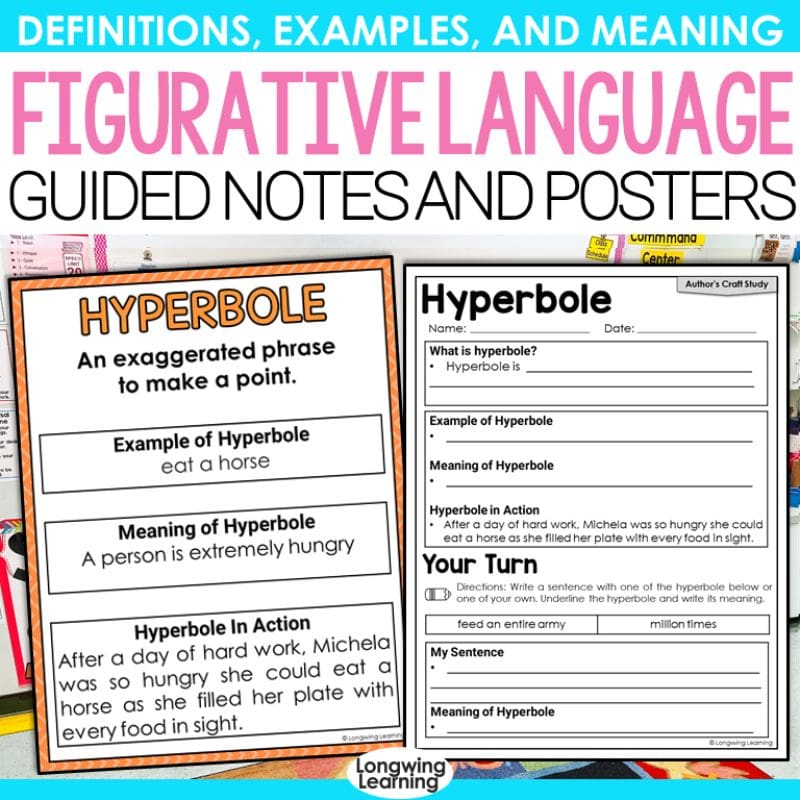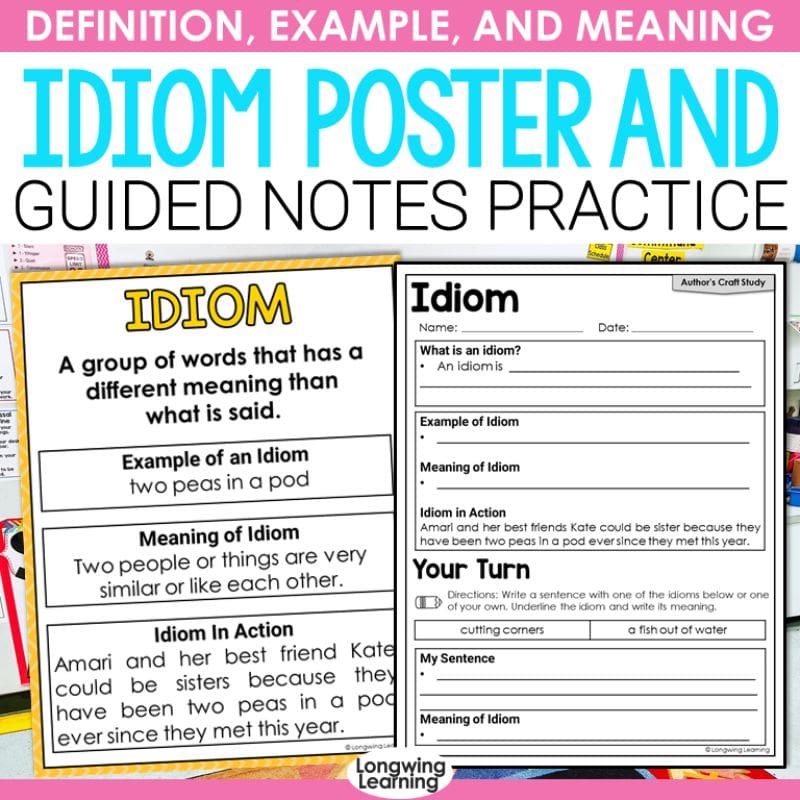3 Creative Ways to Bring Poetry into the Classroom
Bringing poetry into the classroom can get students to talk to each other, express their thoughts, and tackle challenging topics.
However, with so many other activities a teacher must complete within a reading block, it's pretty easy to push it aside.
Besides reading poems during National Poetry Month in April, students can do many other poetry activities in fourth grade.
Read on to find other ways to bring poetry into the classroom for your students to develop writing skills and foster a sense of community as they learn about the people around them.
Let's explore these engaging poetry activities for 4th grade to incorporate poetry into your classroom.
Poetry Activity 1: Write bio poem
Students writing a bio poem about themselves using the bio poem template is a poetry activity that is excellent for building classroom community at any time of the year.
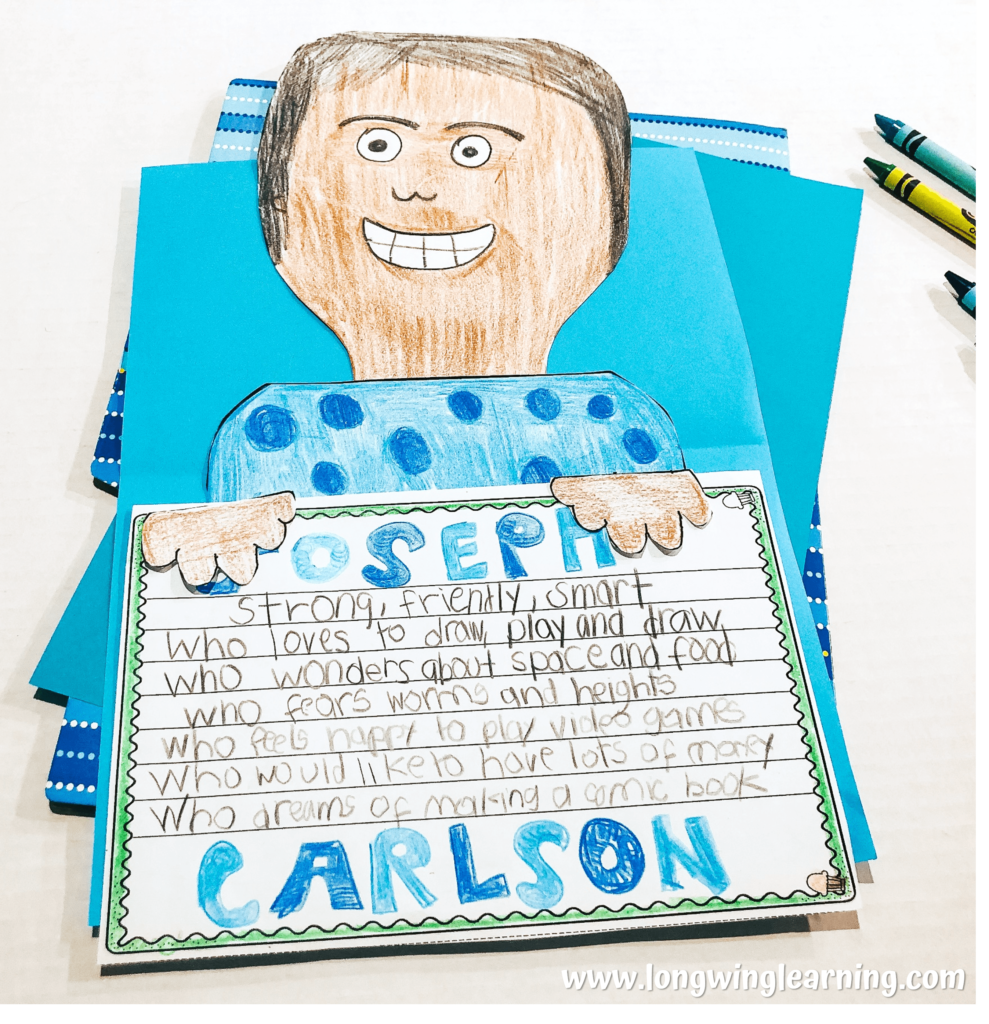
By following the bio poem template, students answer the questions to create their bio poem.
Bio poems are biographical poems based on a person and do not have to rhyme.
One of the main features students enjoy writing a bio poem is at the end when they include pictures of items that represent their unique personality.
Poetry Activity 2: Write a Cinquain poem as an exit ticket
The following poetry activity for 4th grade is writing a cinquain poem to show what they have learned about a topic.
This poetry activity works for any subject and topic. If you are a content area teacher writing a cinquain poem is one way to bring poetry into the classroom.
Here is an example of a cinquain poem my fourth graders did after our unit on magnets.
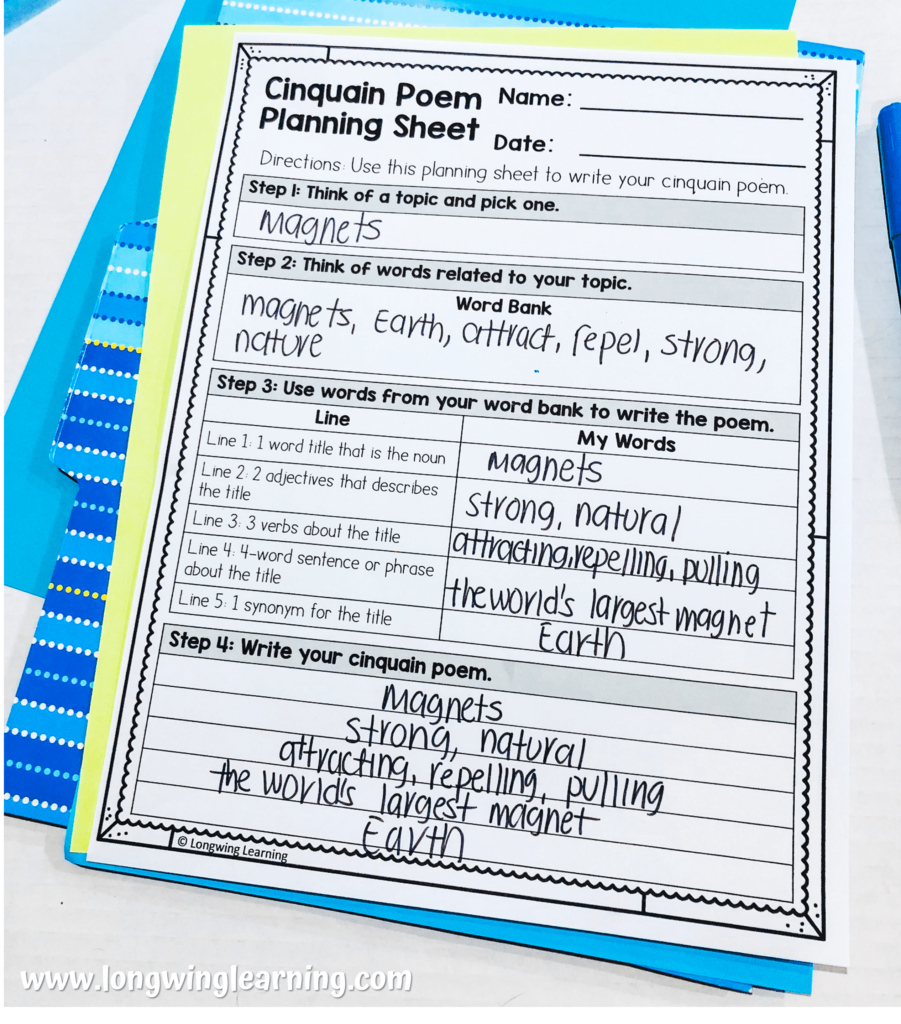
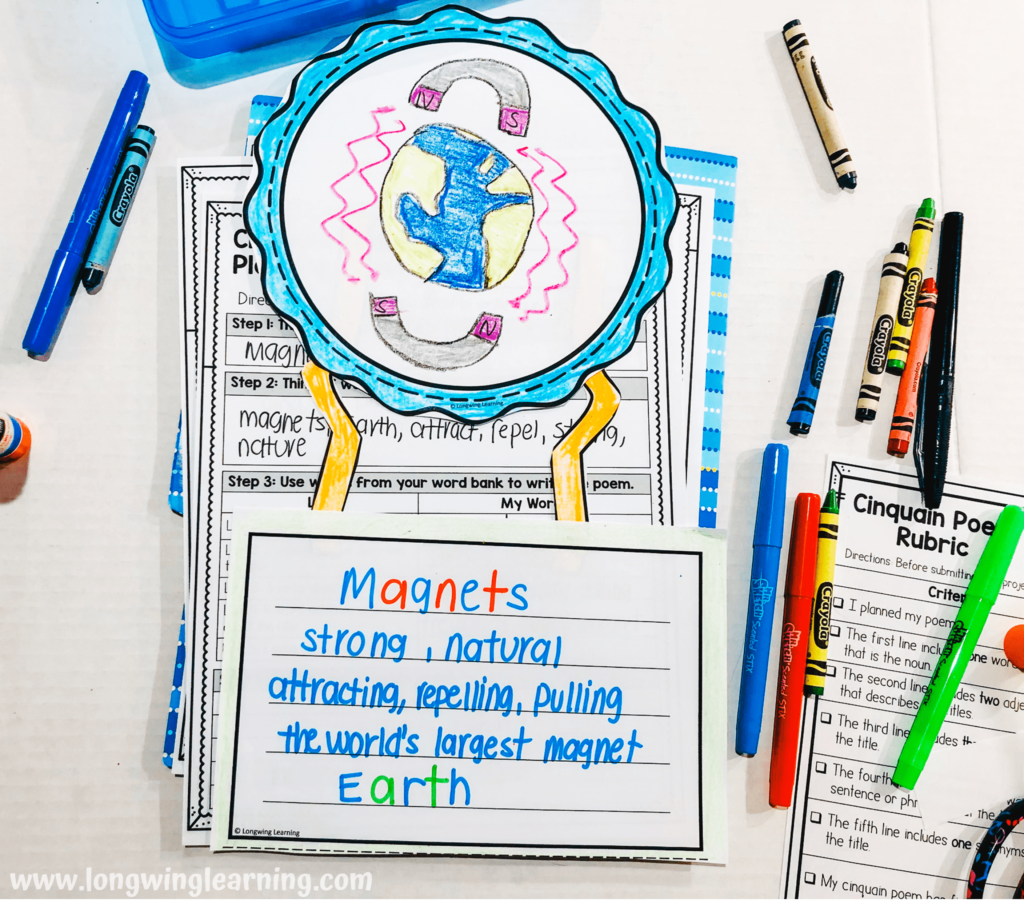
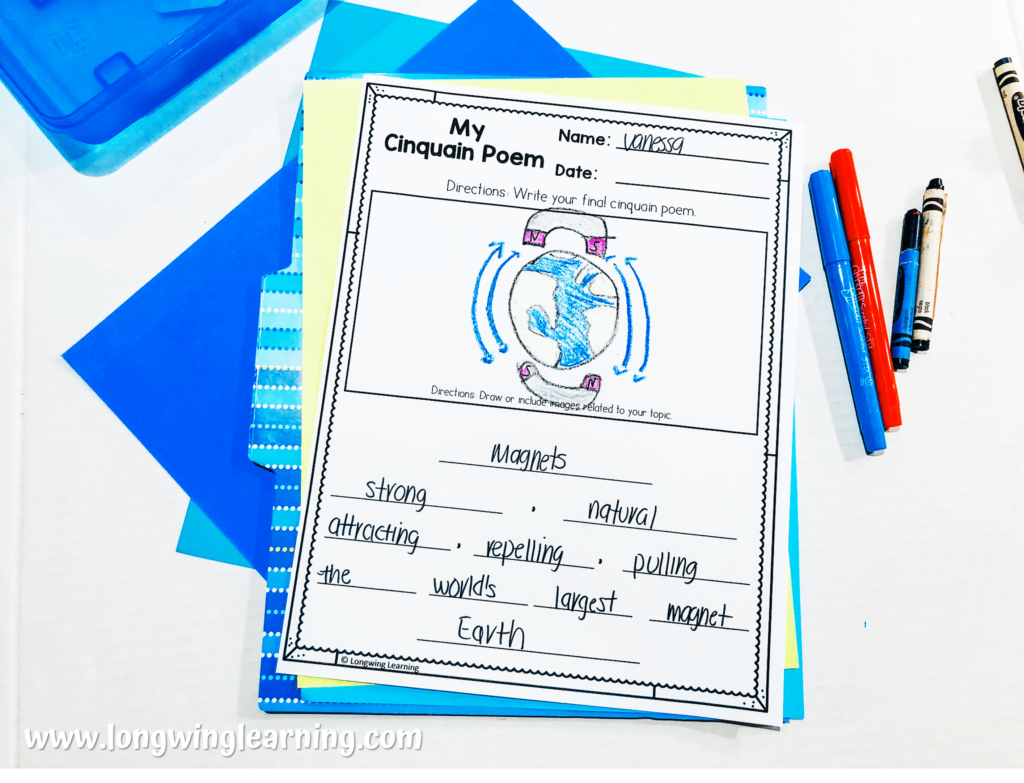
Students love writing cinquain poems because they are short in length, and using a cinquain template, they can write one in a breeze.
A cinquain poem contains five lines, with only a few words on each line, and does not have to rhyme.
So, no need to spend hours looking at a thesaurus for rhyming words.
Poetry Activity 3: Write a bio poem about a famous person
This next poetry activity is a twist to the bio poem.
Instead of writing a bio poem about them, students write it about a historical figure.
Students can use the historical bio poem template to write a bio poem based on a historical figure.
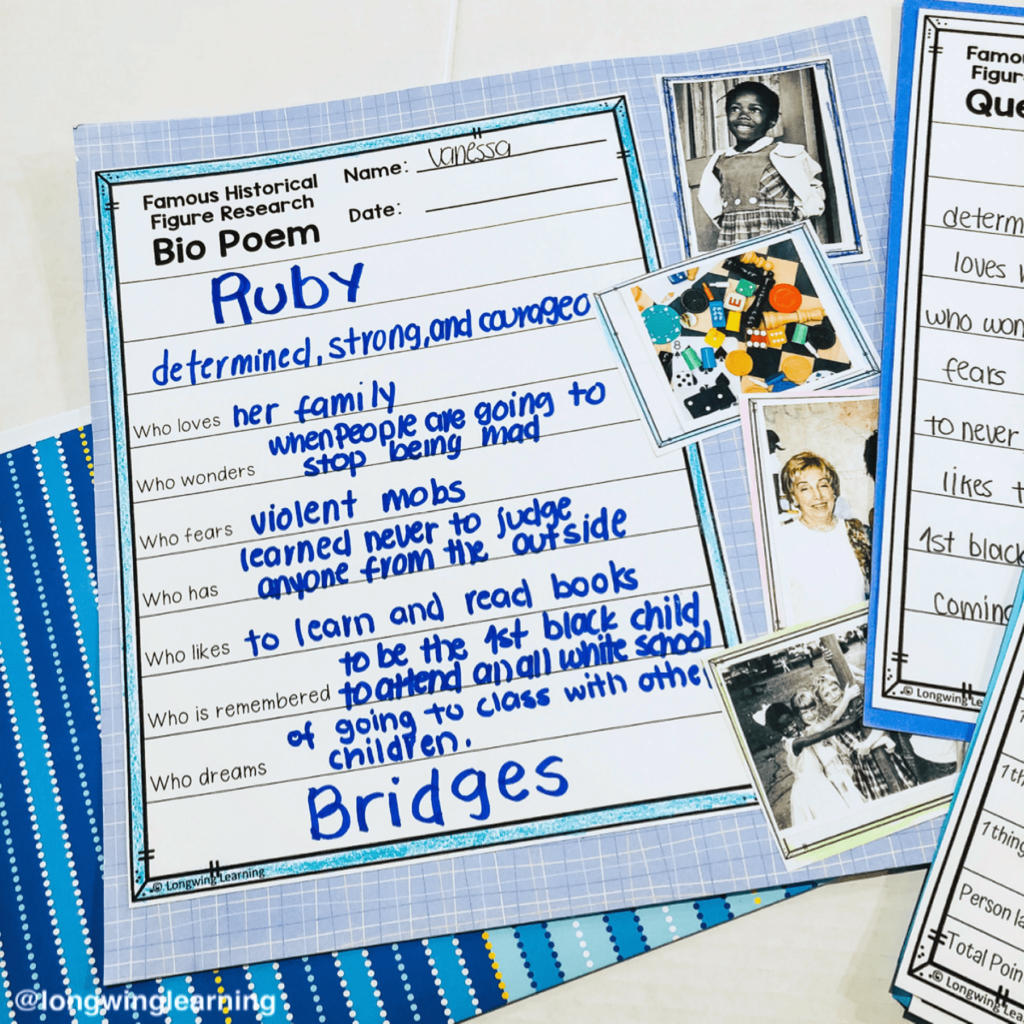
For example, after researching the person designated, students complete the bio poem template based on their research.
Students can practice making inferences about the character's thoughts and actions by completing a bio poem based on a famous person.
This poetry activity works great as an alternative project to writing a biography essay.
Writing a historical bio poem is another creative way to bring poetry into the classroom for Hispanic Heritage Month, Women's History Month, or Black History Month.
Wrapping It Up
Bringing poetry into the classroom can easily be integrated into an upper elementary classroom in numerous ways, from an exit ticket to writing mini biographies.
Featured Resources


3 Creative Ways to Bring Poetry into the Classroom Read More »

